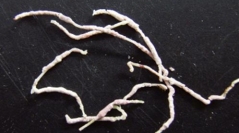

 Cryptogamie, Algologie
39 (1) - Pages 123-137
Cryptogamie, Algologie
39 (1) - Pages 123-137A constant effort in sequencing an extensive number of specimens originating from comprehensive sampling had return an unprecedented amount of information fostering our understanding of diversity, evolution and distribution of coralline algae; however, many sequences lack reliable assignation of a taxonomic name, specially at the species level. Recently, the sequencing of type material allowed to bridge this gap by providing a direct link between the DNA sequence and the type bearing name. For instance, in the genus Lithophyllum, the identity of three species, generally abundant along the European Atlantic and the Mediterranean, was demonstrated by including sequences of the type material. Nevertheless, for less conspicious species, such as Lithophyllum nitorum, data are still needed to assess distribution, anatomy, phylogenetic affinities and taxonomic status. Using DNA sequences recovered from the type material of L. nitorum, further recent collections were resolved as conspecific and used to improve the description and refine the distribution of this species. Lithophyllum nitorum consisted of subtidal, thin crusts overgrowing fragments of dead maerl, pebbles and drifted fragments of fishing lines. The presence of uniporate conceptacles markedly protruding can be considered an external morphological feature useful to identify L. nitorum from other subtidal Lithophyllum species with similar habitat. Lithophyllum nitorum is reported for the Mediterranean Sea and confirmed in the North East Atlantic, a similar distribution as for L. incrustans and L. hibernicum.